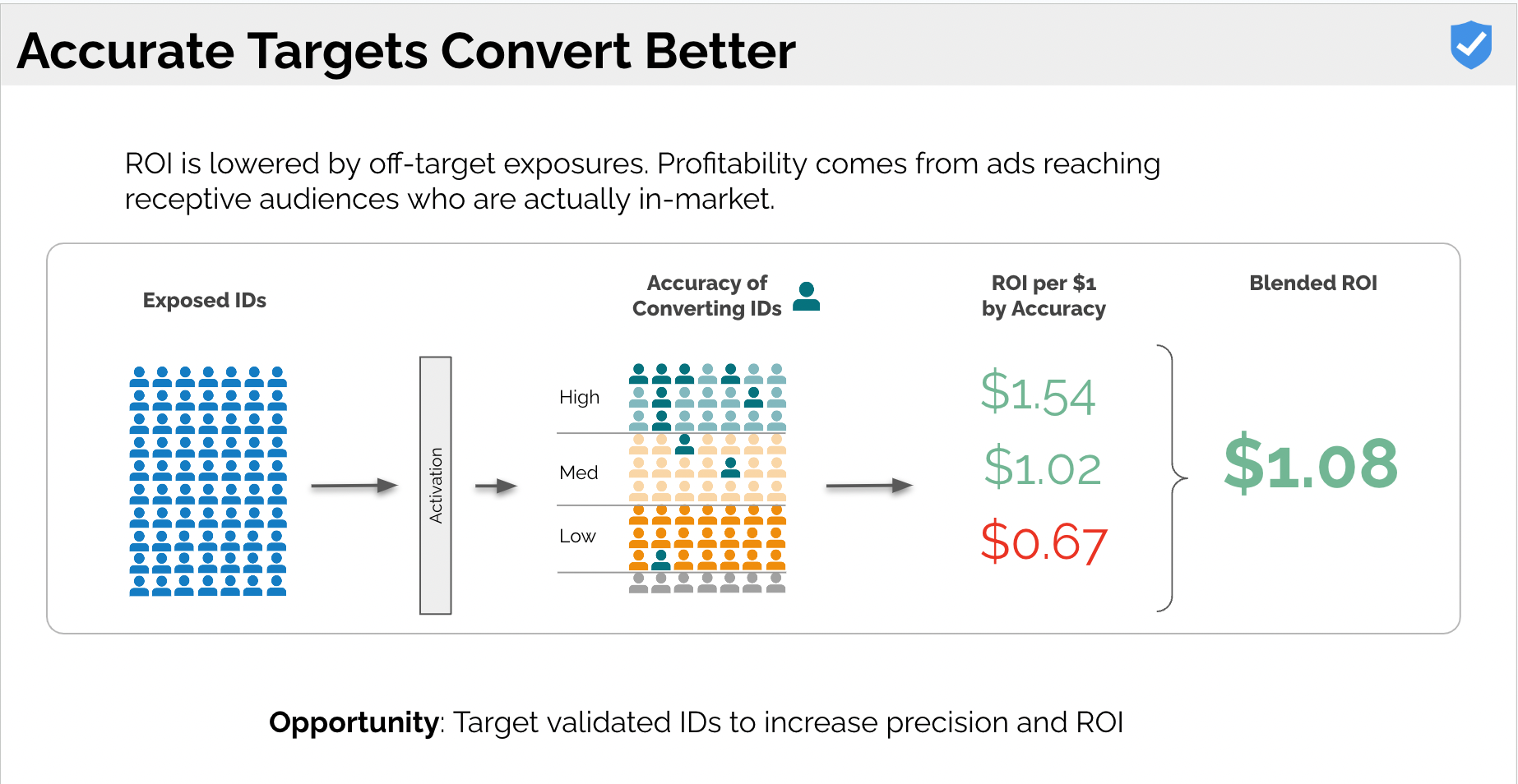Household Identity Study Reveals Marketing Waste, Opportunities For Improvement
Every marketer wants dollars used on targeting to be effective, right? But errors in hashed emails and postal linkages are only accurate 32% to 69% of the time on average, according to a new study from Truthset.
The Coalition for Innovative Media Measurement (CIMM) commissioned Truthset for the largest household identity study ever, in an effort to eliminate marketing waste and enhance big data accuracy – especially when it comes to the growing ecosystem around TV ad targeting.
For the project, Truthset ingested consumer insights from 15+ leading data companies, consisting of more than 3.9 billion hashed emails (HEMs) and postal linkages from every zip code in America and validated the information against the U.S. Census Bureau, Pew Research Center, and a variety of other independent, self-reported, and declared data from over 20 million records from 2005-2023.
After de-duplicating records, Truthset analyzed the resulting 792 million unique HEMs and 133 million unique postal addresses (90% of all estimated) to provide an assessment of the accuracy and validity of consumer marketing data and released the following findings:
The results revealed 1.2 billion unique HEM and postal pairs, with email addresses linked to an average of 1.6 postal addresses. Meanwhile, postal addresses were linked to an average of 9.1 emails apiece. That dissonance creates issues when trying to accurately deliver relevant, targeted advertising. Truthset analysis showed that HEM and postal linkages are only accurate 51% of the time (varying between 32% and 69% depending on the provider).
The long and short? Targeted advertising isn’t getting to its intended target as often as brands and agencies (or networks) would prefer. But the study also shows a path forward…
According to Truthset, removing these inaccurate datasets from advanced audiences can increase on-target accuracy and ROI by 3-4x. For the campaigns analyzed, Blended ROI came in at $1.08. But after the off-target datasets were removed, campaign ROI jumped up to $1.54.
“Big data is going to play an important role in the future of the advertising ecosystem, but right now, the industry is focused solely on scale,” said Scott McKinley, Founder & CEO at Truthset. “For the first time ever, we have the tools to validate the accuracy of this data and provide a path forward to deliver better audience targeting, better ROI, and ultimately, better consumer experiences.”
As information quality comes under even greater scrutiny with the ongoing proliferation of AI, it is increasingly essential to go over big data with a fine-toothed comb. Truthset isn’t necessarily preaching 100% data accuracy or bust here. Rather, talking about how diagnosing areas of improvement and improving their accuracy can lead to robust gains for ROI at a critical time for marketers.
TV audiences keep fracturing across various programs and platforms, and it’s getting even harder to determine consumer behaviors. But ads (and especially targeted ads) don’t need to be spray-and-pray endeavors. Ensuring data accuracy at least makes sure that valuable dollars are being put in the best situation to get messaging in front of the intended audience.


